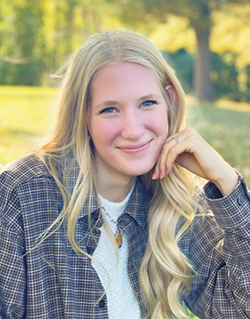Academic Major: Anthropology
 Title: Profiling Skeletons Using Long Bones from Medieval Burials in Central Kenya
Title: Profiling Skeletons Using Long Bones from Medieval Burials in Central Kenya
I spent this summer working in the Central Highlands of Kenya for a Study Abroad Internship. Two Medieval burials were discovered in this region, and I spent time in the excavation and museum study of the remains. I worked with the long bones from these burials by observing cut marks that may indicate mortuary practice and taking measurements. This project will be a continuation of my work in Kenya. My work will include taking measurements and observing other features of the long bones to gather comparative data from the collections at SUNY Potsdam and the American Museum of Natural History in New York (AMNH). The measurement data will be used to estimate the ancestry (or adaptation), sex, and stature of the skeletons found in Kenya. I will use instruments such as an osteometric board, a digital caliper, and a tailor ruler/tape to take measurements of the total length, the diameter of the head, and diaphyseal (shaft) measurements. Features of the long bone shaft can be used to infer some kinds of adaptation. My goal would be to collect long bone data on cold-adapted populations at the AMNH to determine if the skeletons belong to people adapted to cold environments since they live near Mount Kenya, an area with low ambient temperatures. The results of my project will contribute to the overall study of the burial remains. This project contributes to my personal, academic, and professional goals in many ways. It will allow me to contribute to a larger study that will eventually be published and have the opportunity to work alongside professionals in my field. Work such as this cannot be conducted in a classroom. It will add to my experience as an anthropologist and further the skills I began developing over the summer. Very few undergraduate students are able to be part of a research project such as this one, and I want to take advantage of the opportunity I have. I plan to present my findings at the Learning and Research Fair on campus, publish an article in the Collegiate Anthropologist, and potentially present at a regional conference.
